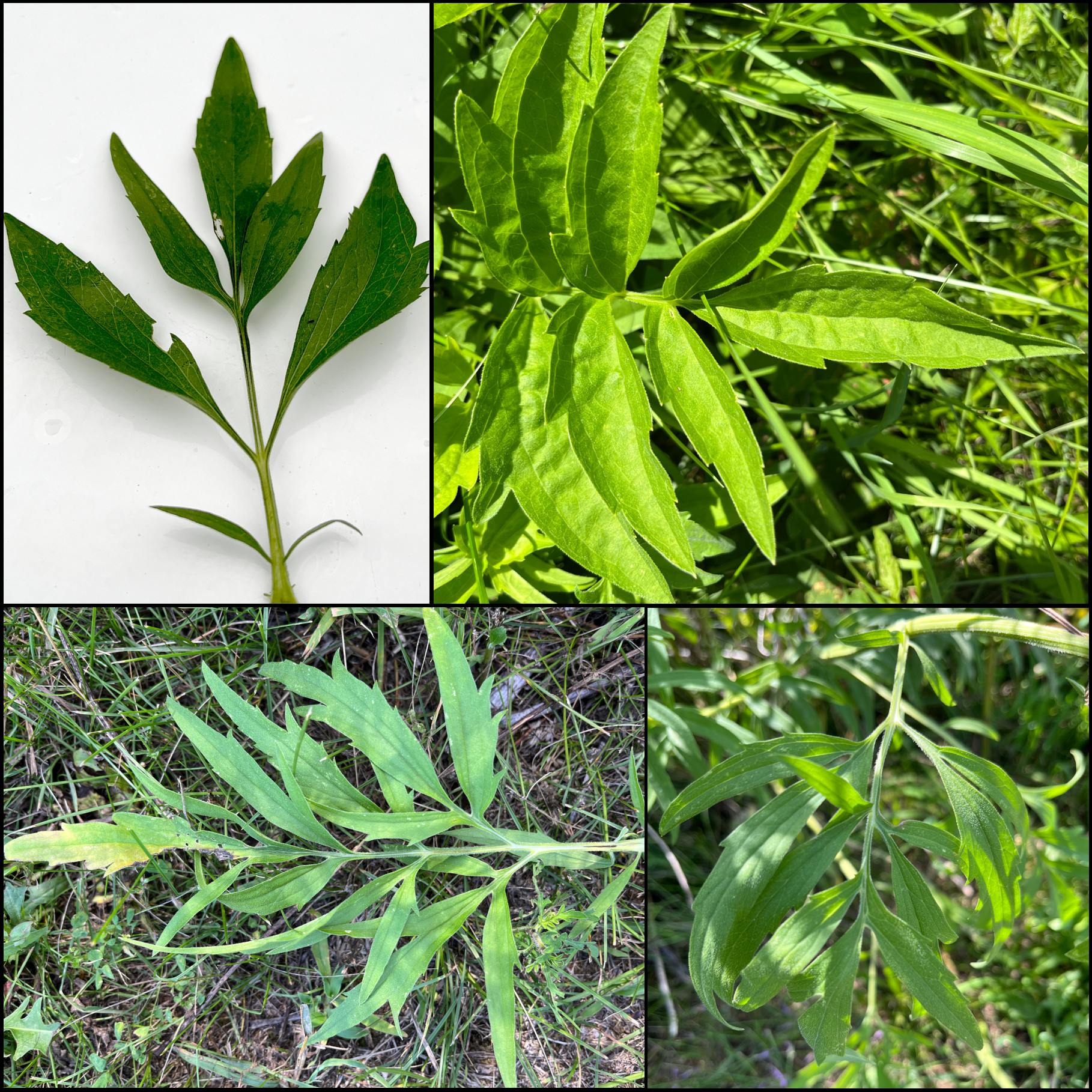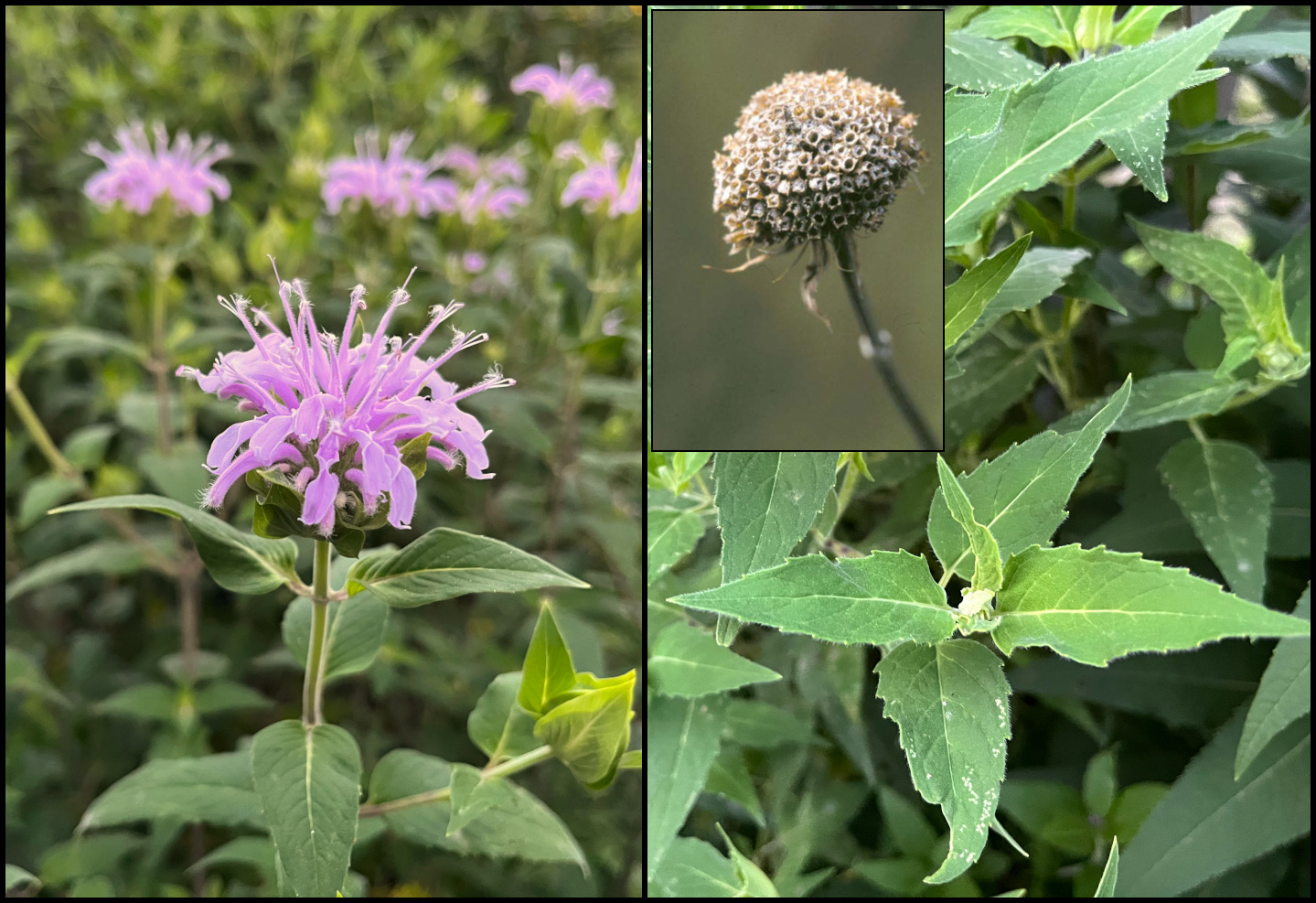Drive-by Botany: Yellow coneflower and wild bergamot
Profiles of common Michigan roadside flora in late July 2023.

Authors’ note: Drive-By Botany is a continuing series that highlights flowering plants commonly seen from the road. As a service to new readers, we include the introduction with each article. If you're already familiar with the premise, feel free to skip down to the good stuff.
Has a patch of flowers ever caught your eye as you travelled down the road? It certainly happens to us all the time! As gardeners and naturalists, we're always interested increasing diversity in our gardens and landscapes, so we thought it would be fun to consider some of the roadside plants that we see every day. Each article in this series will feature two plant species that are currently blooming and frequently observed from the road. Our goal is to answer two simple questions:
-
- What are they?
- Would they make good garden plants?
As part of the process, we'll include some biological tidbits and a few useful characteristics for identification. Please note that some of the plants we feature are exotic invasive species; we'll be sure to include recommendations from land management professionals on how to manage them in your landscape.
July 2023 - week 30, GDD 1397 East Lansing (base 50)
Yellow coneflower (Ratibida pinnata)
Synonyms: prairie coneflower, grey-headed coneflower, pinnate prairie coneflower, drooping coneflower
Yellow coneflower is a native herbaceous perennial and part of the aster family (Asteraceae), an enormous group of plants that holds significant economic importance. Some of the primary contributions of this plant family lie in agriculture and horticulture. Several members of the Asteraceae family are cultivated as important crops, such as lettuce, sunflower, safflower and artichoke, providing essential food products and oils. Additionally, many ornamental plants, including chrysanthemums, asters, and dahlias, are prized for their captivating flowers, driving the floriculture industry and enhancing landscapes and gardens worldwide.
Beyond agriculture and horticulture, the aster family plays a pivotal role in herbal medicine and pharmaceuticals. Numerous species within this family, such as chamomile, Echinacea and yarrow possess medicinal properties1 that have been utilized for centuries to treat various ailments. The commercial production of herbal teas, dietary supplements and herbal remedies relies heavily on these valuable plants.
Description
Flowers: Ratibida pinnata flowers sit gracefully on tall stems and have bright yellow petals that radiate from the base of an egg-shaped central structure. As with many members of the Asteraceae family, what appears to be a single flower is, in fact, a composition of numerous specialized flowers (florets). The central structure is composed of 100-200 individual disc florets, while the yellow petals -- typically 1-3 inches in length -- are actually individual ray florets. The central disc changes from yellow-green to brownish-purple and finally to a grey color as the flowerhead matures and senesces. It has been noted that the disc, when crushed or bruised, produces a pleasant scent of anise, adding to the overall floral experience.
Those interested in learning more about composite flowerheads can find a detailed description in our profile of chicory (Cichorium intybus).
Leaves: Yellow coneflower leaves are vibrant green with deeply-cut lance-shaped lobes and margins that are often smooth, but sometimes have large teeth (PHOTO).

Leaf size may vary, depending on the developmental stage of the plant, with basal leaves typically being larger than those on the upper stem. When held in the hand, these leaves often feel stiff and rough to the touch.
Seeds/Fruit: Like many asters, R. pinnata seeds are produced by the disc flowers in the center of the flower head. This species commonly produces 100-200 disc florets per flowerhead, thus each flowerhead yields approximately 100-200 seeds.
Stem: Yellow coneflower stems are slender and stiff with hairs and faint ridges, typically growing 3-5 feet tall.
Distribution: Ratibida pinnata has been documented in 22 Michigan counties, mostly in the southern half of the lower peninsula, but has also been recorded as far north as Keweenaw County in the upper peninsula. It is typically found in prairies, woodland edges and the occasional roadside habitat.
Blooming period: The blooming period for yellow coneflower is relatively long, starting in July and sometimes persisting into September.
Native status: This species is native to much of the eastern United States and Ontario, including Michigan.
Garden uses: What's not to love about this plant? It is relatively easy to grow from seed, endures the transplanting process like a champ and is quite drought tolerant once established, making it an excellent choice for sunny gardens and natural areas alike.
Because of the sparse foliage and slender stems, we suggest planting them in bunches of three or more combined with prairie grasses such as Indian grass (Sorghastrum nutans), little bluestem (Schizachyrium scoparium), or even Calamagrostis 'Karl Foerster'. Yellow coneflower is attractive to pollinators and pairs perfectly with species such as wild bergamot and blue giant hyssop, all of which bloom at the same time. Moreover, the seedheads are the stiff stems persist throughout the winter, adding visual interest to the landscape.
Common look-alikes: Long-headed coneflower (Ratibida columnifera), Tall coneflower (Rudbeckia laciniata)
Wild bergamot (Monarda fistulosa)
Synonyms: Bee balm
Wild bergamot is a member of the mint family (Lamiaceae) and, like many other plants in the family, it is a perennial forb with fragrant leaves. It also has the characteristic square stems and opposite leaf arrangement of the family. It spreads quickly from both from rhizomes and by seed, forming dense colonies. The common name “bee balm” may come from its use by indigenous tribes in medicinal balms to soothe bee stings, as well as its use by native bees for nectar. The other common name, wild bergamot, comes from the scent of the leaves when crushed (true bergamot citrus is the flavor in the tea Earl Grey).
Description
Flowers: Lightly fragrant flowers are most commonly a light purple or lavender in color. Individual flowers are tubular and approximately one inch long. Flowers are held at the top of a growth stem in a ring giving the flower clusters a somewhat ragged appearance.

Leaves: Wild bergamot leaves are gray-green in color, lance shaped with toothed margins, and typically measure 2-3 inches in length. The leaves are arranged opposite from each other on the stem and release a pleasant fragrance when disturbed.
Stem: It has a narrow, upright square stem, branching near the top. The square stem is characteristic of the Lamiaceae family.
Seeds/Fruit: Unripened fruit may have a green appearance with a silvery coating. The ripened fruit is reminiscent of miniature cherries with rough tan spots on their surface. Fruits are typically smaller than a pea and can contain up to four individual nutlets. They are often numerous when found growing in full sun and are loved by birds.
Size: A mature stand of purple bee balm grows 2-4 feet tall. A first-year plant, grown from seed, grows approximately 1 foot tall and wide.
Distribution: M. fistulosa has been documented in almost every county in Michigan, across the upper and lower peninsulas. It is frequently found in dry open areas with average, well-drained soils such as savannas, prairies, fields, roadsides and woodland edges.
Blooming period: Bee balm blooms through summer in Michigan, typically beginning in late June or early July.
Native status: Native to Michigan. Monarda fistulosa is native to eastern North America, west to Iowa and Kansas.
Garden uses: Wild bergamot is an essential selection for a pollinator garden. Hummingbirds, bees, butterflies, and moths, visit bee balm flowers. According to scientists at the Xerces Society, M. fistulosa is a valuable monarch nectar plant. Researchers have observed that sand wasps, a wasp that preys on the brown marmorated stinkbug, nectar exclusively on this species. It prefers full sun and can tolerate a wide range of soil conditions.
It should be noted that wild bergamot can be an aggressive species and may outgrow its site in a few seasons without intervention from the gardener. It is also prone to powdery mildew and should be situated where it has good air circulation. This species performs well in competition with other aggressive prairie plants. Consider combining it with Silphium species (e.g. cup plant, rosin weed, compass plant), Helianthus & Heliopolis species (downy sunflower, false sunflower), yellow coneflower, and native grasses, such as little bluestem and indian grass.
Common lookalikes: Monarda fistulosa may be confused with other species in the genus Monarda, such as scarlet beebalm (Monarda didyma), white bergamot (Monarda clinopodia) and “nativars” of Mondarda. However, as a species, M. didyma can be distinguished because it has bright red flowers and is generally shorter than purple beebalm. M. clinopodia not only has white flowers, but it also, according to Michigan Flora, prefers “moist floodplain forests, a habitat quite different from the upland and mostly sunny sites of the similar M. fistulosa.” Nativars are cultivars of native plants — they have been selected by horticulturists because of unique characteristics such as color, size or disease resistance. Some “nativars” of M. didyma may be confused with the species M. fistulosa because the nativars have been selected for purple flowers.
Want more Drive-by Botany?
Check out some of our previous roadside adventures!
Questions? Feel free to contact Jeremy Jubenville or Lindsey Kerr with the MSU Extension landscape team.
Thank you to Tyler Bassett from the Michigan Natural Features Inventory for his review of this article.
Resources
- Michigan Flora (2001) – E. Voss
- USDA PLANTS Database - Securigera varia (plants.usda.gov)
- Weeds of the Northeast (1997) – Uva, Neal, and DiTomaso



 Print
Print Email
Email




